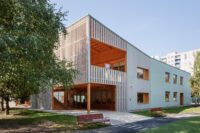- Home
- Articles
- Architectural Portfolio
- Architectral Presentation
- Inspirational Stories
- Architecture News
- Visualization
- BIM Industry
- Facade Design
- Parametric Design
- Career
- Landscape Architecture
- Construction
- Artificial Intelligence
- Sketching
- Design Softwares
- Diagrams
- Writing
- Architectural Tips
- Sustainability
- Courses
- Concept
- Technology
- History & Heritage
- Future of Architecture
- Guides & How-To
- Art & Culture
- Projects
- Interior Design
- Competitions
- Jobs
- Store
- Tools
- More
- Home
- Articles
- Architectural Portfolio
- Architectral Presentation
- Inspirational Stories
- Architecture News
- Visualization
- BIM Industry
- Facade Design
- Parametric Design
- Career
- Landscape Architecture
- Construction
- Artificial Intelligence
- Sketching
- Design Softwares
- Diagrams
- Writing
- Architectural Tips
- Sustainability
- Courses
- Concept
- Technology
- History & Heritage
- Future of Architecture
- Guides & How-To
- Art & Culture
- Projects
- Interior Design
- Competitions
- Jobs
- Store
- Tools
- More
Thriving in Your First Year of Architecture School: Challenges, Skills, and Connections
Embarking on the journey of architecture school can be both exhilarating and daunting. This article delves into the vital first year, highlighting the blend of creativity, critical thinking, and technical skills required to thrive. Discover the importance of resilience, time management, and collaboration, while mastering foundational concepts in design and architecture history.

Starting architecture school is an exhilarating journey filled with creativity and challenges. As we step into this new world, we find ourselves immersed in a blend of art, science, and design thinking. The first year sets the stage for everything to come, introducing us to fundamental concepts that will shape our architectural perspective.
From late-night studio sessions to collaborative projects, we quickly learn that architecture isn’t just about buildings; it’s about understanding space, context, and the human experience. We navigate through critiques and feedback, honing our skills while discovering our unique design voices. This year is pivotal, laying the groundwork for our future as architects and innovators.

Table of Contents
ToggleChallenges Faced by Students
First-year architecture students encounter significant challenges that test their resilience and adaptability. The transition from high school or a previous field of study requires adjustments to new demands and expectations.

Time Management
Time management proves crucial for success in architecture school. Students often juggle multiple assignments, studio work, and collaborative projects. Establishing a consistent schedule allows us to allocate sufficient time for design tasks, research, and critiques. Prioritizing tasks based on deadlines and complexity helps maintain organization and productivity. Using tools like planners or time-tracking apps can enhance our ability to meet tight schedules effectively.
Workload and Expectations
The workload in the first year of architecture school is often more intense than anticipated. Students face numerous projects, from hand-drawn sketches to computer-generated models. Faculty expectations require high levels of creativity, technical proficiency, and critical analysis. Engaging in peer reviews and accepting constructive criticism fosters growth. Maintaining open communication with instructors aids in understanding project requirements and assessment criteria. Balancing ambition with realism in project scope ensures we meet high standards without compromising mental well-being.
Core Subjects in the First Year
The first year of architecture school introduces core subjects that lay the groundwork for our future studies. These subjects blend theoretical knowledge and practical skills essential for becoming successful architects.

Design Studio
Design Studio serves as the heart of architectural education. Students engage in hands-on projects that challenge creativity and problem-solving skills. We explore fundamental design principles, develop spatial awareness, and practice model-making techniques. Regular critiques from peers and instructors provide valuable feedback, fostering our growth as designers. Each project emphasizes the importance of design processes, from conceptualization to presentation, ensuring we cultivate our unique design identities.
History and Theory of Architecture
History and Theory of Architecture offers insights into architectural movements and philosophies throughout time. This course examines influential architects, landmark buildings, and significant cultural contexts that shape our built environment. We analyze historical precedents and apply lessons learned to contemporary design challenges. Understanding the evolution of architecture deepens our appreciation for the discipline and informs our innovative approaches to future projects.
Skills Developed During the First Year
The first year of architecture school shapes essential skills that benefit our educational journey and professional development. Students typically gain technical skills and critical thinking abilities that are crucial for success in architecture.

Technical Skills
We enhance various technical skills during our first year, focusing on fundamental tools and software essential for architectural design. Skills include:
- Drafting: Mastering manual and digital drafting techniques, enabling us to create precise architectural drawings.
- 3D Modeling: Learning software like SketchUp and Rhino helps us visualize designs through detailed three-dimensional models.
- Visualization: Developing proficiency in tools such as Adobe Photoshop and InDesign allows us to present ideas through effective graphics and layouts.
- Model Making: Gaining experience in physical model construction teaches us about scale, proportion, and materiality in architectural design.
These foundational technical skills not only boost our competency in design but also enhance our ability to communicate ideas effectively to peers and instructors.
Critical Thinking
We cultivate critical thinking skills vital for problem-solving in architecture. These skills include:
- Analytical Skills: Dissecting complex design challenges helps us approach problems methodically and develop innovative solutions.
- Conceptualization: Framing ideas and translating abstract thoughts into tangible designs encourages us to think beyond traditional boundaries.
- Feedback Integration: Engaging in critiques promotes the ability to evaluate our work and that of others, fostering adaptability and growth in our design approaches.
Critical thinking equips us to tackle architectural challenges with creativity and insight, paving the way for effective solutions and designs in future projects.
Social Aspects of the First Year
The first year of architecture school presents numerous opportunities for social interaction, emphasizing collaboration and building friendships. Engaging with fellow students creates a supportive network essential for navigating the challenges of architectural education.

Collaboration and Teamwork
Collaboration and teamwork play a vital role in our first-year experience. Studio projects often require us to work in groups, fostering communication and collective problem-solving. Sharing diverse perspectives enhances our creativity and strengthens our design outcomes. Regular peer critiques and group discussions encourage us to articulate our ideas while receiving constructive feedback, essential for growth as designers. These collaborations often lead to lasting connections, laying the groundwork for future partnerships in our architectural journeys.
Building Friendships
Building friendships becomes an integral part of our first year. Late-night study sessions and group projects create opportunities for bonding amid shared struggles and successes. Common interests in architecture facilitate discussions, promoting deeper connections. Networking with classmates often leads to study groups and collaborative learning environments that further enhance our academic performance. These friendships provide emotional support, ensuring we navigate the demanding nature of architecture school together, making this formative year not just about education but also about forming lifelong relationships.
Conclusion
First-year architecture school immerses us in a unique blend of creativity and critical thinking, setting a solid foundation for our future careers. We embrace the intensive studio culture, understanding that our late-night sessions and collaborative projects sharpen our design skills and foster teamwork. Engaging with peers during studio critiques enhances our ability to receive and integrate constructive feedback, critical for growth in our design process.
We navigate challenges such as time management, balancing multiple assignments and projects while maintaining quality. Consistent schedules and clear priorities help us stay organized, enabling us to harness our creativity amidst demanding workloads. We cultivate resilience, ensuring our mental well-being while pushing boundaries in our design practices.
Core subjects, particularly Design Studio and History and Theory of Architecture, equip us with essential knowledge and skills. These courses not only hone our technical abilities in drafting, modeling, and visualization but also deepen our understanding of architectural movements and philosophies. Critical thinking emerges as a vital skill, allowing us to dissect complex problems and propose innovative solutions.
Social connections play a significant role during our first year. We foster friendships and build a supportive network that aids us in confronting the rigors of architectural education. Collaboration strengthens our design outcomes, showcasing the power of diverse perspectives in our projects. Together, we cultivate an enriching environment that balances intellectual and emotional support. This first year shapes our identities as future architects and innovators.
- academic success in architecture
- architectural design basics
- architecture school connections
- architecture school motivation
- architecture school resources
- architecture school study groups
- architecture school success
- architecture school tips
- architecture student challenges
- architecture student community
- Architecture Student Skills
- balancing projects in architecture school
- first year architecture advice
- first year architecture experiences
- networking in architecture school
- overcoming architecture school stress
- preparing for architecture school
- skills for architecture students
- study techniques for architecture
- surviving first year architecture
- time management architecture students
I create and manage digital content for architecture-focused platforms, specializing in blog writing, short-form video editing, visual content production, and social media coordination. With a strong background in project and team management, I bring structure and creativity to every stage of content production. My skills in marketing, visual design, and strategic planning enable me to deliver impactful, brand-aligned results.
Submit your architectural projects
Follow these steps for submission your project. Submission FormLatest Posts
Why Architecture Students Need Feel Good Productivity for Success and Well-Being
Discover how architecture students can embrace "feel-good productivity" to balance creativity, efficiency,...
Architectural Education: Shaping Future Architects Through Creativity and Innovation
Explore the transformative realm of architectural education and its pivotal role in...
Top Reasons Every School Should Invest in High-Quality Mats
Schools need to freely function as agents of change for the future, where...
Benefits of Earning a GED or High School Diploma Online
Having a high school diploma or GED opens the door to better...












Leave a comment